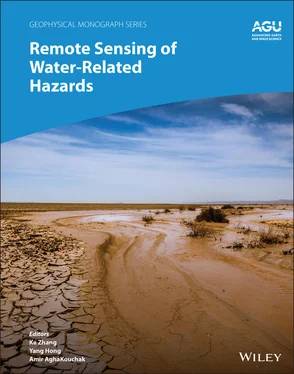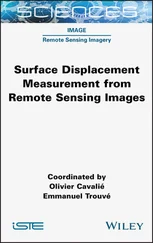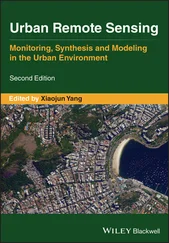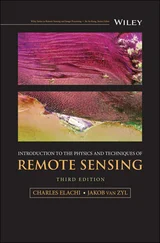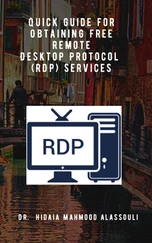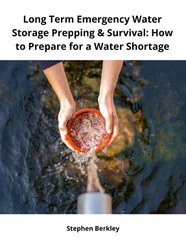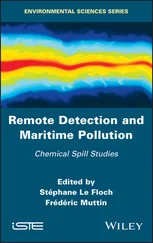Remote Sensing of Water-Related Hazards
Здесь есть возможность читать онлайн «Remote Sensing of Water-Related Hazards» — ознакомительный отрывок электронной книги совершенно бесплатно, а после прочтения отрывка купить полную версию. В некоторых случаях можно слушать аудио, скачать через торрент в формате fb2 и присутствует краткое содержание. Жанр: unrecognised, на английском языке. Описание произведения, (предисловие) а так же отзывы посетителей доступны на портале библиотеки ЛибКат.
- Название:Remote Sensing of Water-Related Hazards
- Автор:
- Жанр:
- Год:неизвестен
- ISBN:нет данных
- Рейтинг книги:5 / 5. Голосов: 1
-
Избранное:Добавить в избранное
- Отзывы:
-
Ваша оценка:
- 100
- 1
- 2
- 3
- 4
- 5
Remote Sensing of Water-Related Hazards: краткое содержание, описание и аннотация
Предлагаем к чтению аннотацию, описание, краткое содержание или предисловие (зависит от того, что написал сам автор книги «Remote Sensing of Water-Related Hazards»). Если вы не нашли необходимую информацию о книге — напишите в комментариях, мы постараемся отыскать её.
Remote Sensing of Water-Related Hazards Remote Sensing of Water-Related Hazards
The American Geophysical Union promotes discovery in Earth and space science for the benefit of humanity. Its publications disseminate scientific knowledge and provide resources for researchers, students, and professionals.
Remote Sensing of Water-Related Hazards — читать онлайн ознакомительный отрывок
Ниже представлен текст книги, разбитый по страницам. Система сохранения места последней прочитанной страницы, позволяет с удобством читать онлайн бесплатно книгу «Remote Sensing of Water-Related Hazards», без необходимости каждый раз заново искать на чём Вы остановились. Поставьте закладку, и сможете в любой момент перейти на страницу, на которой закончили чтение.
Интервал:
Закладка:
We appreciate the extensive efforts by the developers of the ground, satellite, and reanalysis precipitation datasets to make their products available. The study is funded by the Global Water Futures program in Canada, the National Natural Science Foundation of China (grant 71461010701 and 41471430), and the National Key R&D Program of China (2018YFC1508105).
REFERENCES
1 Alemohammad, S. H., McColl, K. A., Konings, A. G., Entekhabi, D., & Stoffelen, A. (2015). Characterization of precipitation product errors across the United States using multiplicative triple collocation. Hydrology and Earth System Sciences, 19(8), 3489–3503. https://doi.org/10.5194/hess‐19‐3489‐2015
2 Ashouri, H., Hsu, K.‐L., Sorooshian, S., Braithwaite, D. K., Knapp, K. R., Cecil, L. D., et al. (2015). PERSIANN‐CDR: Daily precipitation climate data record from multisatellite observations for hydrological and climate studies. Bulletin of the American Meteorological Society, 96(1), 69–83. https://doi.org/10.1175/bams‐d‐13‐00068.1
3 Behrangi, A., Yin, X., Rajagopal, S., Stampoulis, D., & Ye, H. (2018). On distinguishing snowfall from rainfall using near‐surface atmospheric information: Comparative analysis, uncertainties, and hydrologic importance. Quarterly Journal of the Royal Meteorological Society. https://doi.org/10.1002/qj.3240
4 Chen C.‐Y., Liou W.‐Z., & Hsu C.‐H. (2017). A Rainfall‐based Warning Model for Predicting Landslides Using QPESUMS Rainfall Data. Retrieved from https://ir.lib.nchu.edu.tw/handle/11455/97403
5 Ciabatta, L., Brocca, L., Massari, C., Moramarco, T., Puca, S., Rinollo, A., et al. (2015). Integration of satellite soil moisture and rainfall observations over the Italian territory. Journal of Hydrometeorology, 16(3), 1341–1355. https://doi.org/10.1175/jhm‐d‐14‐0108.1
6 Clark, R. A., Gourley, J. J., Flamig, Z. L., Hong, Y., & Clark, E. (2014). CONUS‐wide evaluation of National Weather Service flash flood guidance products. Weather and Forecasting, 29(2), 377–392.
7 Dee, D. P., Uppala, S. M., Simmons, A. J., Berrisford, P., Poli, P., Kobayashi, S., et al. (2011). The ERA‐Interim reanalysis: Configuration and performance of the data assimilation system. Quarterly Journal of the Royal Meteorological Society, 137(656), 553–597. https://doi.org/10.1002/qj.828
8 Funk, C., Peterson, P., Landsfeld, M., Pedreros, D., Verdin, J., Shukla, S., et al. (2015). The climate hazards infrared precipitation with stations: A new environmental record for monitoring extremes. Scientific Data, 2, 150066. https://doi.org/10.1038/sdata.2015.66
9 Gelaro, R., McCarty, W., Suárez, M. J., Todling, R., Molod, A., Takacs, L., et al. (2017). The Modern‐Era Retrospective Analysis for Research and Applications, Version 2 (MERRA‐2). Journal of Climate, 30(14), 5419–5454. https://doi.org/10.1175/jcli‐d‐16‐0758.1
10 Gourley, J. J., Flamig, Z. L., Vergara, H., Kirstetter, P.‐E., Clark III, R. A., Argyle, E., et al. (2017). The FLASH Project: Improving the tools for flash flood monitoring and prediction across the United States. Bulletin of the American Meteorological Society, 98(2), 361–372.
11 Guo, L., He, B., Ma, M., Chang, Q., Li, Q., Zhang, K., & Hong, Y. (2018). A comprehensive flash flood defense system in China: Overview, achievements, and outlook. Natural Hazards, 92(2), 727–740.
12 Gupta, H. V., Kling, H., Yilmaz, K. K., & Martinez, G. F. (2009). Decomposition of the mean squared error and NSE performance criteria: Implications for improving hydrological modelling. Journal of Hydrology, 377(1–2), 80–91.
13 Hersbach, H., Bell, B., Berrisford, P., Hirahara, S., Horányi, A., Muñoz‐Sabater, J., et al. (2020). The ERA5 global reanalysis. Quarterly Journal of the Royal Meteorological Society, 146(730), 1999–2049. https://doi.org/10.1002/qj.3803
14 Hong, Y., Hsu, K. L., Sorooshian, S., & Gao, X. G. (2004). Precipitation estimation from remotely sensed imagery using an artificial neural network cloud classification system. Journal of Applied Meteorology, 43(12), 1834–1852. https://doi.org/Doi 10.1175/Jam2173.1
15 Hong, Y., Hsu, K., Moradkhani, H., & Sorooshian, S. (2006). Uncertainty quantification of satellite precipitation estimation and Monte Carlo assessment of the error propagation into hydrologic response. Water Resources Research, 42(8). https://doi.org/10.1029/2005wr004398
16 Hong, Y., Adler, R. F., Negri, A., & Huffman, G. J. (2007). Flood and landslide applications of near real‐time satellite rainfall products. Natural Hazards, 43(2), 285–294. https://doi.org/10.1007/s11069‐006‐9106‐x
17 Hong, Y., Tang, G., Ma, Y., Huang, Q., Han, Z., Zeng, Z., et al. (2018). Remote sensing precipitation: Sensors, retrievals, validations, and applications. In X. Li & H. Vereecken (Eds.), Observation and Measurement of Ecohydrological Processes (pp. 1–23). Berlin: Springer.
18 Huffman, G. J., Bolvin, D. T., Nelkin, E. J., Wolff, D. B., Adler, R. F., Gu, G., et al. (2007). The TRMM Multisatellite Precipitation Analysis (TMPA): Quasi‐global, multiyear, combined‐sensor precipitation estimates at fine scales. Journal of Hydrometeorology, 8(1), 38–55. https://doi.org/10.1175/jhm560.1
19 Huffman, G. J., Bolvin, D. T., Braithwaite, D., Hsu, K., Joyce, R., Kidd, C., et al. (2019). NASA Global Precipitation Measurement (GPM) Integrated Multi‐satellitE Retrievals for GPM (IMERG). [Algorithm theoretical basis document (ATBD)]. Greenbelt, MD: NASA/GSFC. https://pmm.nasa.gov/sites/default/files/document_files/IMERG_ATBD_V5.1b.pdf
20 Jiang, L., & Bauer‐Gottwein, P. (2019). How do GPM IMERG precipitation estimates perform as hydrological model forcing? Evaluation for 300 catchments across Mainland China. Journal of Hydrology, 572, 486–500. https://doi.org/10.1016/j.jhydrol.2019.03.042
21 Joyce, R. J., Janowiak, J. E., Arkin, P. A., & Xie, P. P. (2004). CMORPH: A method that produces global precipitation estimates from passive microwave and infrared data at high spatial and temporal resolution. Journal of Hydrometeorology, 5(3), 487–503. https://doi.org/Doi10.1175/1525‐7541(2004)005<0487:Camtpg>2.0.Co;2
22 Kling, H., Fuchs, M., & Paulin, M. (2012). Runoff conditions in the upper Danube basin under an ensemble of climate change scenarios. Journal of Hydrology, 424, 264–277.
23 Legates, D. R., & Willmott, C. J. (1990). Mean seasonal and spatial variability in gauge‐corrected, global precipitation. International Journal of Climatology, 10(2), 111–127.
24 Ma, M., Liu, C., Zhao, G., Xie, H., Jia, P., Wang, D., et al. (2019). Flash flood risk analysis based on machine learning techniques in the Yunnan Province, China. Remote Sensing, 11(2), 170.
25 Ma, M., Wang, H., Jia, P., Tang, G., Wang, D., Ma, Z., & Yan, H. (2020). Application of the GPM‐IMERG products in flash flood warning: A case study in Yunnan, China. Remote Sensing, 12(12), 1954. https://doi.org/10.3390/rs12121954
26 Mega, T., Ushio, T., Kubota, T., Kachi, M., Aonashi, K., & Shige, S. (2014). Gauge adjusted global satellite mapping of precipitation (GSMaP_Gauge) (pp. 1–4). Presented at the 2014 XXXIth URSI General Assembly and Scientific Symposium (URSI GASS), IEEE.
27 Shen, Y., & Xiong, A. (2016). Validation and comparison of a new gauge‐based precipitation analysis over mainland China. International Journal of Climatology, 36(1), 252–265. https://doi.org/10.1002/joc.4341
28 Shen, Y., Zhao, P., Pan, Y., & Yu, J. (2014). A high spatiotemporal gauge‐satellite merged precipitation analysis over China. Journal of Geophysical Research: Atmospheres, 119(6), 3063–3075. https://doi.org/10.1002/2013JD020686
29 Stoffelen, A. (1998). Toward the true near‐surface wind speed: Error modeling and calibration using triple collocation. Journal of Geophysical Research: Oceans, 103(C4), 7755–7766. https://doi.org/10.1029/97jc03180
Читать дальшеИнтервал:
Закладка:
Похожие книги на «Remote Sensing of Water-Related Hazards»
Представляем Вашему вниманию похожие книги на «Remote Sensing of Water-Related Hazards» списком для выбора. Мы отобрали схожую по названию и смыслу литературу в надежде предоставить читателям больше вариантов отыскать новые, интересные, ещё непрочитанные произведения.
Обсуждение, отзывы о книге «Remote Sensing of Water-Related Hazards» и просто собственные мнения читателей. Оставьте ваши комментарии, напишите, что Вы думаете о произведении, его смысле или главных героях. Укажите что конкретно понравилось, а что нет, и почему Вы так считаете.
